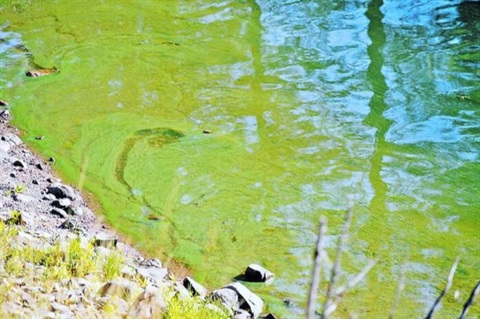Blue-green algae

Blue-green algae, also known as Cyanobacteria, can be found in almost all water systems in Australia. This includes rivers, dams, creeks, wetlands and lakes such as Lake Wallace or Lake Charlegrark. Blue-green algae occurs more often when the water is still, and weather or water is warm. Blue-green algae is monitored regularly through sampling and water testing and blooms are managed based on the use of the water body, density and nature of the bloom.
Blooms
In appropriate conditions, blue-green algae can grow rapidly, and form visible blooms. Blooms are usually somewhere between dark green/blue and yellowish brown. Blooms generally occur during the summer and autumn months, often when nutrient levels are high, temperatures are warm, and the water is relatively slow with low turbulence. A blue-green algae bloom can last for several weeks or even months, depending on optimum environmental conditions.
Please contact Council on 13 99 72 if you see suspected blue-green algae in the West Wimmera Shire Council.
Health Risks
Water that is affected by blue-green algae may not be suitable for drinking, recreation or agricultural use. The harmful toxins produced by some species of blue-green algae may take effect when eaten, inhaled or skin contact is made. Contact with affected water can cause skin irritation, mild respiratory effects and hayfever-like symptoms. Ingesting toxins can also cause gastroenteritis symptoms, such as vomiting, diarrhoea, fever and headaches. Toxins can also have an effect on the liver and the nervous system.
Do not swim, wade, fish or drink from water bodies that have blue-green algal blooms and do not let dogs and other animals wade or swim in affected water.
If you come in contact with affected water wash yourself and any clothing thoroughly with clean water.
If you are worried about your health or have been in contact with blue-green algae please contact your doctor.